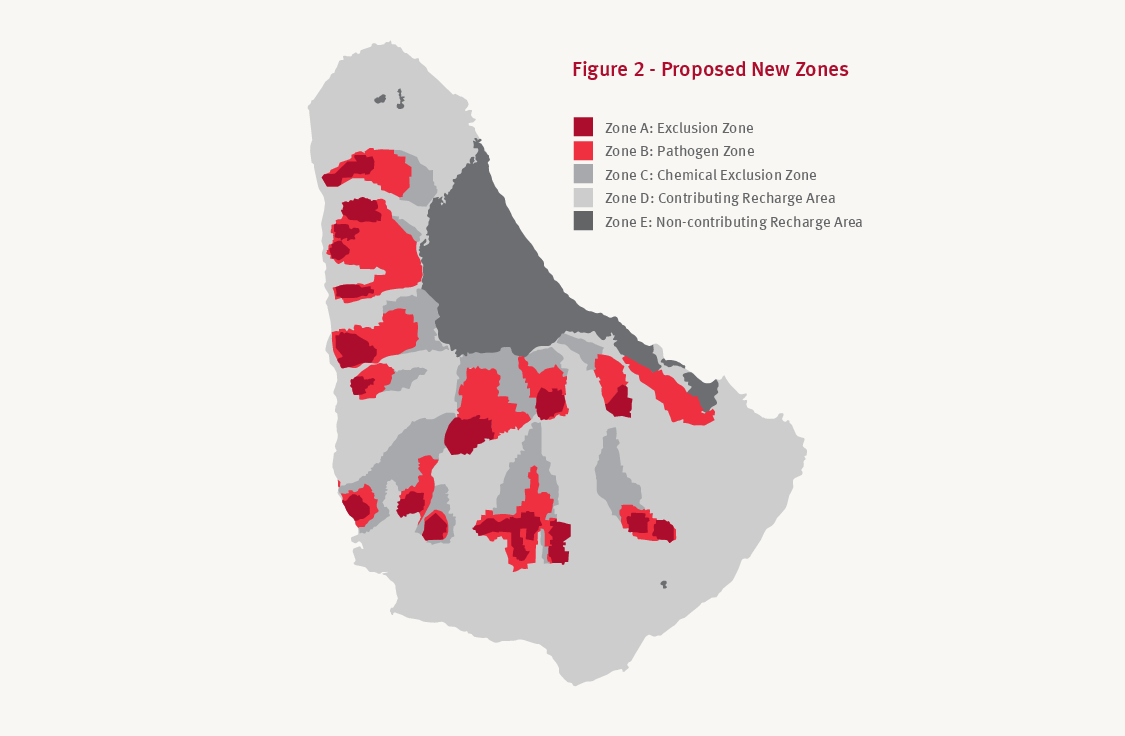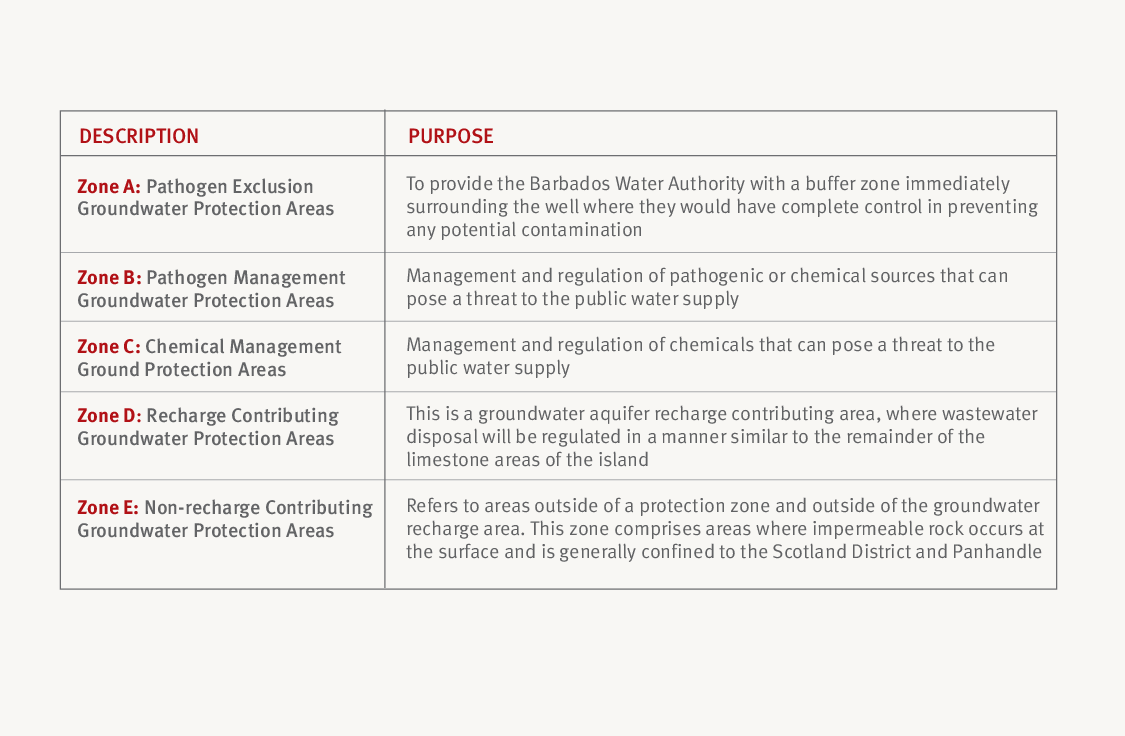Water Zones & Development
Water is vital to everyday living and we are constantly advised to do our best not to pollute our water sources, and ensure we drink as much as we can. But did you also know that water can significantly impact where you can build?
Did you know that Barbados has been classified by the UN as the 15th most water scarce country in the World, or that the majority of water scarce nations on the UN list are located in the Middle East and the Caribbean? The critical nature of Barbados’ water scarcity is an important planning issue addressed through a multi-pronged systems approach, coupled with protection and conservation measures to ensure the long-term supply of fresh water.

The source of all our local freshwater resources is rainfall. Some of this water is either trapped above the ground in surface impoundments (surface runoff) or infiltrates deep into the coral rock to become groundwater. The quality of our water is maintained through a number of factors and measures including Soil Cover, Coral Rock and Groundwater Protection (Zoning) Policy. It is this policy, that directly impacts property development. Early in 1960s this policy was implemented to protect the island’s groundwater resources. The policy delineates the island into five zones (See Figure 1), with Zone 1 being the most restrictive in terms of development, while Zone 5 has no major restrictions for development. Table 1 presents a few highlights of the restrictions in the five zones. The detailed list of zone restricted land uses and activities is presented on page 154 of References.
As noted in the Draft 2017 Physical Development Plan, the Groundwater Protection Act is to be updated to reflect a refined approach to defining Groundwater Protection Areas and delineation of new zones of protection. This new zoning approach divides the island into five areas, Zone A to Zone E shown in Figure 2.

The policies related to each proposed zone will determine the level of infrastructure services, and waste disposal methods required and provide a framework for development control i.e. building. A summary of the Description and Purpose by Zone are presented at Table 2 below. The detailed table is presented on page 155 of References.
For lands that will no longer be required to comply with the restrictions of former Groundwater Protection Areas 1-5, the priority for any change in land use will be food and agriculture, natural restoration/reforestation, or the provision of affordable housing, providing these uses are in compliance with the new Zone provisions.
So, if you haven’t yet bought land for your dream home, be sure you research your favoured locations and understand what and where you can and cannot build.



